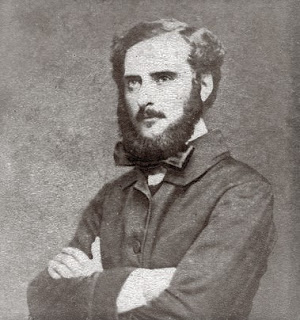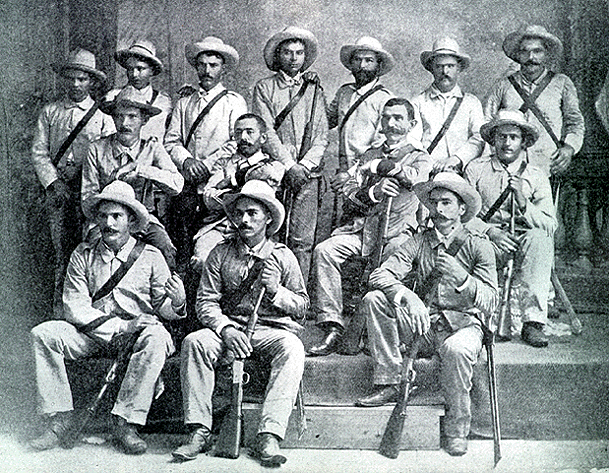Benjamin Pierce, son of Franklin Pierce, was inaugurated in 1885. Pierce decided to keep many of the cabinet members that the late Winfield Scott Hancock had appointed. There were some exceptions though. Secretary of State Samuel Tilden was getting old and would die soon, he was replaced with Senator William Freeman Villas of Wisconsin. As Hancock’s Secretary of the Treasury was now Vice President, that position was given to Representative John G. Carlisle of Kentucky. Senator Daniel Voorhees of Indiana became Attorney General. George Washington Glick of Kansas remained as Secretary of War. George Pendleton of Ohio remained as Postmaster General. Secretary of the Navy Arthur Sewall and Secretary of the Interior Richard Bland had to go. They were put on the cabinet due to the 1880 cooperation between Democrats and Farmer-Laborites. Now that the alliance between the two parties had been broken, there was no longer any need for them. The new Secretary of the Navy would be Edward Woodruff Seymour of Connecticut, great-nephew of Horatio Seymour. The New Secretary of the Interior was Richard Coke of Texas.
The apple doesn’t fall too far from the tree, as the old saying goes. Benjamin Pierce was much like his father. He was a committed expansionist, much more so than his predecessors. After the Douglas administration’s purchase of Alaska, the only American expansion had been in the Pacific. But Pierce turned his gaze towards Latin America. Two opportunities caught his eye. One was Nicaragua, still ruled by the man who owed his continued reign to Pierce the elder. The other was the Spanish empire, particularly Cuba. The people in Cuba were being oppressed by an Imperial power, eliciting sympathy from many Americans. And the island still had legal slavery, though it was being gradually phased out. Pierce wanted America to acquire Cuba and possibly Puerto Rico as well. Early on in his presidency, he said that this should be done “Through peaceful means.” But the US government’s offers to purchase the island were turned down by the Spanish government. Pierce had some success in foreign policy, however. In the Summer of 1885 America and France negotiated an alliance.
America was mostly at peace, with some exceptions. The Navajo continued their raids in the Southwest. As Americans moved into the vast Dakota Territory, conflict with the Indian tribes there was inevitable. In the South, there was still some racial violence. Former confederate soldiers rioted over being denied the right to vote in Louisiana. What followed was the New Orleans Compromise of 1885, proposed by Louisiana native P. G. T. Beauregard and former general and politician Benjamin Butler. The right of former confederates to vote should be restored immediately, and in return, the voting rights of blacks should not be infringed upon. Louisiana passed legislation to enshrine this compromise into law with tripartisan support, and Mississippi followed. President Benjamin Pierce hailed the compromise as a great achievement. Many believed that the compromise would lead to Democrats taking back the entire South and reneging on their promise to uphold the rights of freed slaves. After some debate, South Carolina restored voting rights to former Confederates in 1886. Alabama was the final holdout. The local Whigs were convinced that restoring voting rights would be tantamount to surrendering the state to the Democrats forever.
In 1886, Cubans revolted against Spain, and Spain responded with brutal force. American media brought Spanish atrocities to the public’s attention. President Pierce spoke before Congress in August, arguing for a declaration of war against Spain. This sparked fierce debate. Whig Senator George Hoar of Massachusetts strongly opposed any war, arguing that America was a republic, not an empire. The Farmer-Laborites mostly opposed war as well and there were talks of a potential alliance between the Farmer-Labor and Whig parties. And the Democratic Party wasn’t entirely on board with war either. But Pierce received help from an unlikely source. Former President John Fremont, who had mostly retired from politics, announced his support for the war. This convinced enough Whigs to allow the declaration of war on Spain to pass. US and Spanish fleets soon clashed on the Florida Coast. The Spanish Navy was proving to be a harder adversary to beat than the Americans had suspected. In the Pacific, Philippine rebels were emboldened by the news. At the same time, over in Europe France began to mobilize troops.
(Spanish soldiers in Cuba)



